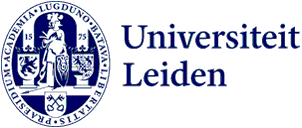
A meaningful view of diversity? You'll find it in art
What does it mean to be a migrant in a big city? According to assistant professor Kamila Krakowska Rodrigues, artists have the answer to that question. In a new ERC-funded project, she will explore the representation of contemporary urban diversity in films, performance art, written literature and spoken word by Afro-European artists.
‘There are a lot of debates stating that we need to stop reducing people to one or two characteristics,’ Rodrigues says. ‘Diversity should bring us added value and help us understand ourselves and each other better, but in practice, you see how easily we fall into stereotypes and classify people according to categories built around nation and race. While these categories can be relevant, they alone don’t represent our complex reality.’
Nuanced representation
According to Rodrigues, art offers a more nuanced form of representation. ‘In previous fieldwork, I've been really inspired by the way artists negotiate the expectations that society and the official policy on diversity impose on them. They don’t reduce themselves to one or two labels, but create safe spaces in which we can experiment with alternative realities that otherwise seem inaccessible or impossible.’
Rodrigues wants to use these alternative realities to take a look at diversity in urbanity. ‘This new project gives us the opportunity to see how their narratives can actually give us a better understanding of our relation to diversity and space in the city,’ she explains. She is going to focus on two cities, Rotterdam and Lisbon. ‘These are interesting case studies, because they both started as port cities, which made them a locus for cultural exchange. On the other hand, both cities show a very interesting dynamic of tensions between different communities and gentrification. Who is entitled to use what space?’
Artists in the team
Rodrigues is not just going to analyse art to answer this question, but will also invite artists to contribute to her research. ‘I see more and more inspiring collaborations between artists and researchers, but giving the artists the stability to become part of the team and own the research process is often a challenge. I really wanted todo it differently, so we will hire two artists as researchers for one day a week for four years.’
This means Rodrigues’ format is an experiment as well. ‘An important part of our project will therefore be to think about meaningful standards of working with people from outside the academia. How can we accommodate them and make sure that this collaboration is equally meaningful for all parties involved? The idea is that they will collaborate with me on writing a monograph, but also represent their own vision on the subject in a creative way.’
